
Review on 15.6" Notebook ASUS TUF Gaming F15 FX506HE-HN012 1920x1080, Intel Core i5 11400H 2.7 GHz, RAM 8 GB, SSD 512 GB, NVIDIA GeForce RTX 3050 Ti, no OS, 90NR0704-M02050, dark gray by Anastazja Frelek (Ma ᠌

The perfect purchase for me, exactly what I was looking for!
A few very significant characteristics, first and foremost, we shall discuss the FPS (otherwise why else buy this laptop). 1) After installing ARMORY CRATE, pick the turbo setting for games, and the visual card will determine the highest frequencies it is capable of pulling. This will offer a +5% increase in FPS. By the way, you can adjust the mode of the keyboard's backlight there as well. 2) Because the cooling of the laptop is average (even though the laptop is built to function in high temperatures, it still lowers the GPU frequencies), make sure that the back of the table is lifted off of the table. When the air is drawn in from below, a distance of just a few millimeters from the table top is insufficient. +2% FPS 3) Disable the CPU turbo boost by looking up instructions online; the processor is already very productive, so running it at 2.9 GHz with 16 threads should be sufficient. Because of this, the GPU temperature will decrease by 7-9 degrees (up to -73 degrees), which will have a positive effect on the laptop in the future, eliminate any friezes that may have been forming, and make it possible to increase the GPU frequencies even more. Yet, it can make sense to leave the turbo boost off in games that are demanding. 4) Increase memory so that the memory works in dual mode; this will considerably boost performance; I had a Samsung ddr4 3200mhz, and I got Crucial (micron chip); make sure that the characteristics are not worse; check the reviews; however, don't bother too much. FPS has been increased by somewhere between +15 and +20%, or possibly more! 5) The native screen is really connected to the integrated video card, and this laptop is one of the few gaming laptops that also has HDMI connectivity, which is a bit of a bummer. What exactly does this entail? That after graphics processing, the RTX 3050 stores the image in the memory of the integrated video card rather than displaying it on the screen, since the memory of the integrated card is already used to display the image on the screen. Understandably, this is a bottleneck, and because of that, there will be a slight delay as well as a drop in performance. The solution is to get a USB hub (type-c) with an HDMI connector (ideally one that can push more than 60 Hz if you have an adequate display), connect the monitor through it, and the frame rate will increase by 15–20 percent. Only the GPU benchmark after all of these actions (passmark) jumped from less than 7850 to 11900, but in reality the FPS increased by more than 50 percent!
- Very productive, DDR4 3200 MHz, CPU 16 threads, and a good Samsung SSD. Well built, not heavy, and a good keyboard. Modern model, USB 3.2, and WiFi6 connectivity. IPS display. 144 Hz refresh rate. - A high-quality sound system that is integral to a laptop There is space available for both memory and disk in the available slot (ssd m2) - RTX 3050 Thermal Design Power of 75 Watts (or thereabouts, i. E. not cut down) - Newer technologies, such as DLSS, which significantly increase the number of frames per second. For instance, the frame rate of RDR2 is significantly higher than that of the 1660 ti.
- - Mediocre cooling (but this is easily solved) - Screen quality is average, but considering this is a low-cost gaming option, this is a very standard solution (also not a special minus, I will explain why in the comment) RTX 3050 does not include a monitor/HDMI mux switch in its hardware (however, there is a solution too) - The video adapter only has 4 gigabytes of memory (although it is gddr6), but it is very debatable how significant of a disadvantage this is. In general, they are sufficient for 1080p, and even if there is not enough, the performance drop will not be significant. - Price: I'm not sure which model of TUF Gaming A15 I have, but both the outside and the internal components are identical in both appearance and functionality. Because I used a coupon that gave me a significant discount when I made my purchase, this turned out to be an excellent choice for me. For eighty thousand, of course, it's a little pricey; you can add a little and buy a model that's more interesting; I think it's worth looking (if there are still such prices) for sixty-two thousand to seventy thousand, taking into account all of the discounts that are available during the month of December.
New products
Comments (4)


Top products in 💻 Laptops
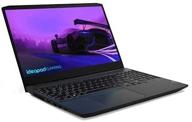
Lenovo IdeaPad Gaming 3: 15.6 Inch AMD Ryzen Gaming Laptop with RTX 3060 6GB GDDR6

118 Review
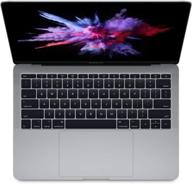
Apple MacBook 13 Inch 2 3GHz 256GB

92 Review
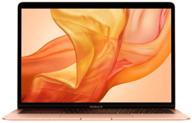
Renewed Apple MacBook Air - 13-inch Retina Display, 💻 1.6GHz Dual-core Intel Core i5, 256GB in Gold (Latest Model)

156 Review
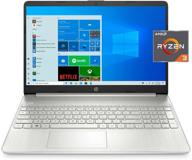
HP 15 Ef1300Wm 3 3250 Silver Windows

100 Review
Another interesting products
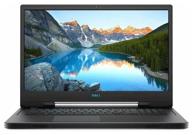
Notebook DELL G7 17 7790 (1920x1080, Intel Core i5 2.4 GHz, RAM 8 GB, SSD 256 GB, HDD 1000 GB, GeForce GTX 1660 Ti, Win10 Home)

26 Review
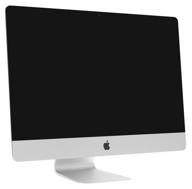
27" Apple iMac All-in-One (Retina 5K, Mid 2020) MXWT2RU/A, 5120x2880, Intel Core i5 3.1GHz, 8GB RAM, 256GB SSD, AMD Radeon Pro 5300, MacOS, Silver

13 Review
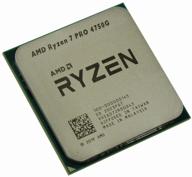
Processor AMD Ryzen 7 PRO 4750G AM4, 8 x 3600 MHz, OEM

11 Review

HP Pavilion Gaming Desktop Computer, Ryzen 5 3500 Processor, NVIDIA GTX 1650 4 GB, 8 GB RAM, 512 GB SSD, Windows 10 Home (TG01-0030, Black)

11 Review



